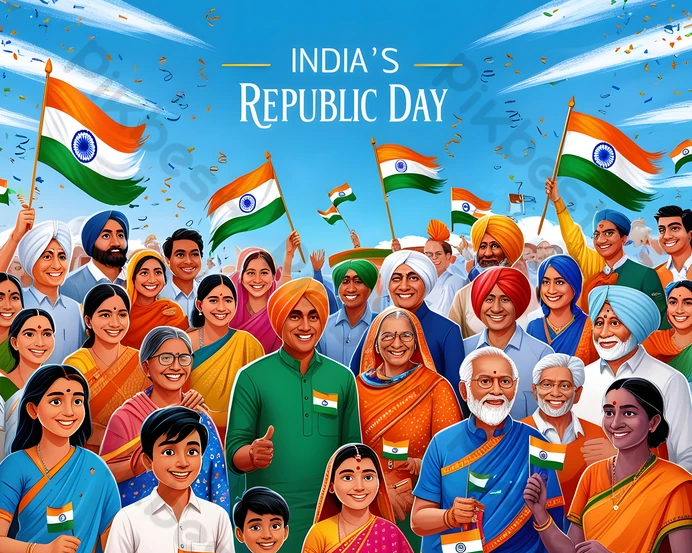Dr. Banarsi Lal
In India, Republic Day is celebrated every year on January 26th. This significant day commemorates the adoption of the Indian Constitution and marks the transition of India from a British Dominion to a republic in 1950. On this occasion, we proudly hoist our tricolor flag, sing patriotic anthems, and honor the sacrifices of our freedom fighters who gave their lives for the nation’s independence. The Indian Constitution was adopted by the Constituent Assembly on November 26, 1949, and came into effect on January 26,1950, officially establishing India as a republic.
This date also holds historical importance as it was on January 26, 1930, that the Indian National Congress, led by Jawaharlal Nehru, declared the Purna Swaraj movement. Although India gained independence years later, this declaration laid the groundwork for the nation’s quest for freedom. The selection of January 26 to draft the Constitution symbolized the link between India’s struggle for freedom and its future as a republic.
The Constitution of India comprises 395 articles and twelve schedules, replacing the Government of India Act 1935 and the Indian Independence Act 1947. Its essence is captured in the Directive Principles of State Policy, which guide the objectives and goals of the State. Alongside Fundamental Rights, citizens also have Fundamental Duties, reinforcing their responsibilities to the nation.
Historically, while democracy in ancient India was a gift from rulers, modern India is characterized by its citizens’ collective decision to structure the nation as a sovereign, socialist, democratic republic that ensures justice, liberty, equality, and fraternity for all. One critical Directive Principle enshrined in the Constitution is the separation of judicial and executive powers, ensuring that the judiciary acts as an impartial protector of civil rights.
At the apex of the judiciary is the Supreme Court, supported by High Courts and subordinate courts throughout the country. With the largest electorate globally, India has set the voting age at 18. The introduction of electronic voting and voter identification cards has modernized the electoral process. The multi-party system has fostered a robust opposition landscape, while the Parliament’s committee system enhances government accountability. The annual reports from the Comptroller and Auditor General keep the government responsive to its citizens.
Democracy, rooted in the Greek term ‘demokratia’, signifies rule by the people. Western scholars, including Bertrand Russell and Will Durant, trace democratic origins back to Athens in the 5th century B.C., while the term ‘Republic’, derived from Latin, denotes governance by elected representatives. The hallmark of an ideal republic is enlightened citizenship, where rights and responsibilities coexist.
Ancient India is believed to have first embraced the concept of republics, with the Lichhvis and Mallas in pre-Mauryan times being among the earliest examples. Even earlier, during the Vedic Age, there were Panchayat republics characterized by inclusive governance, which included the participation of women with full voting rights. Institutions like the Vedic Sabha and Samiti were designed to check the powers of kings and ensure accountability.
The 73rd and 74th Amendments to the Constitution aimed at decentralizing democracy and empowering local governance through elected Panchayat and Municipal bodies. India’s secularism is a pillar of its diverse culture, differing from the Western model by recognizing and accommodating multiple religions. The five fundamental values of our Constitution—Liberty, Equality, Fraternity, Justice, and Secularism—were emphasized in the Preamble, particularly through the 42nd Amendment in 1976.
Education, which is a fundamental right for every child in India up to the age of 14, and cultural inclusivity represent significant strides in human development. Programs like ‘Sarva Shiksha Abhiyan’ have effectively reached over 94% of children about education. For the average Indian, the Republic symbolizes the progress of civilization, cultural continuity, and national unity.
Thus, democracy in India extends beyond mere electoral processes; it embodies a lifestyle that prioritizes the restructuring of civil society. People today are increasingly eager to engage in shaping their futures. Republic Day serves as a reminder of the core values—freedom, justice, and equality—that continue to propel the nation forward.


Leave a Reply